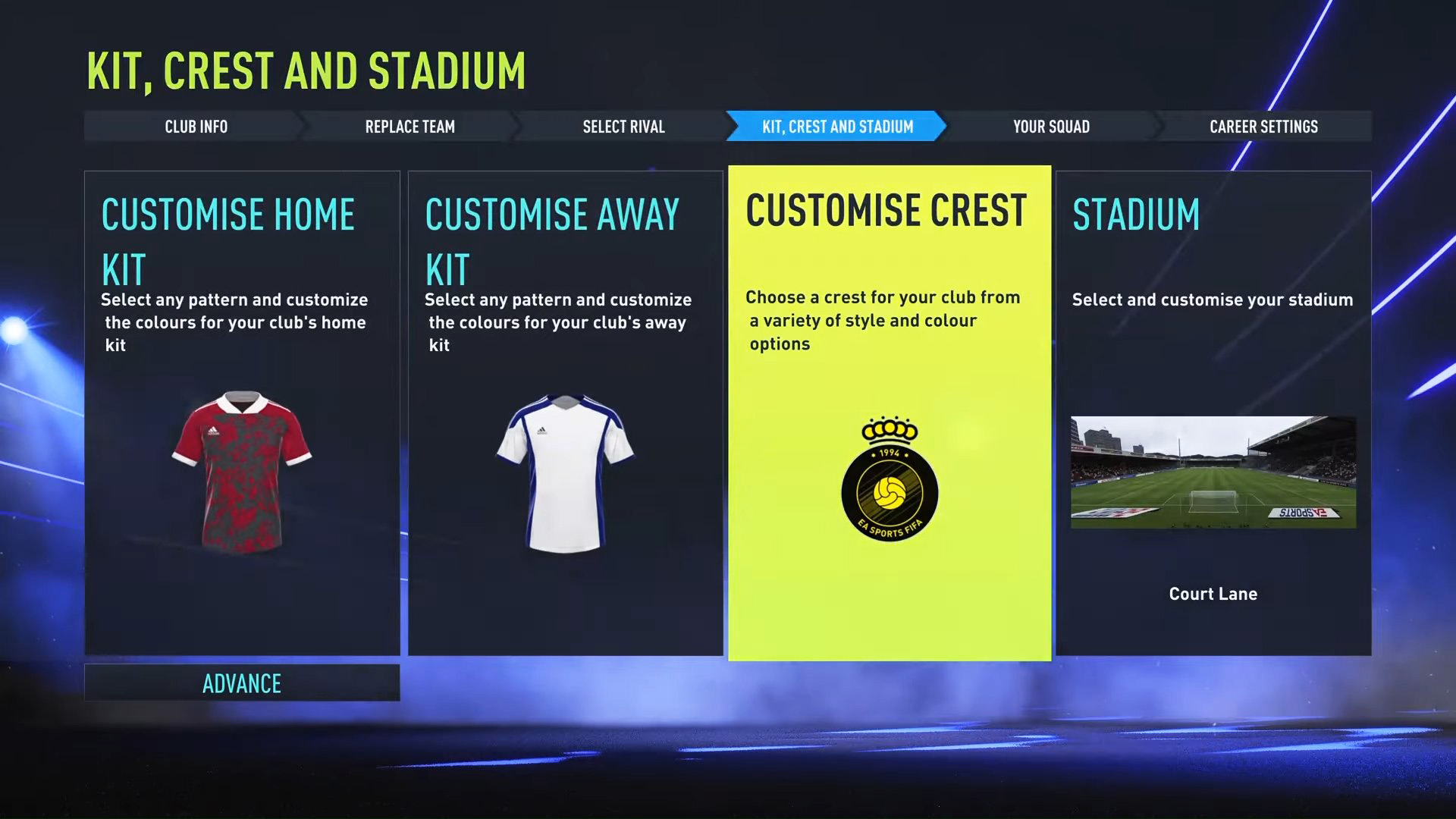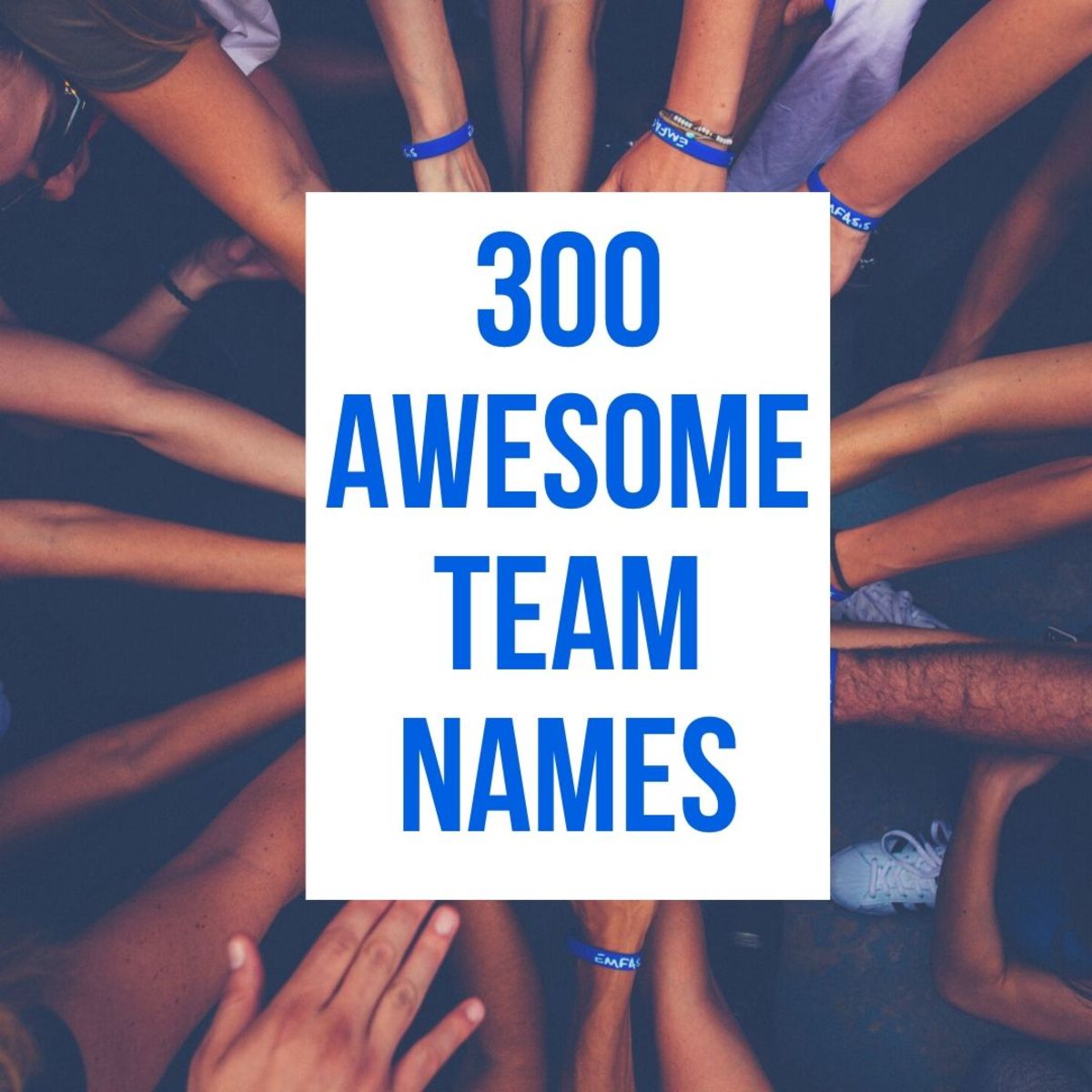When it comes to creative clubs, the name is everything. It’s the first impression, the rallying cry, and the identity that sets your group apart. In this guide, we’ll dive into the world of creative club names, exploring the elements that make a name memorable, inspiring, and effective.
From brainstorming techniques to legal considerations, we’ll cover everything you need to know to find the perfect name for your creative club.
Creative Club Name Brainstorming
Brainstorming a creative club name is an exciting task that sets the tone for your group’s identity and purpose. A well-chosen name can inspire members, attract new participants, and leave a lasting impression.When brainstorming club names, consider the following factors:
Reflect your purpose
Choose a name that captures the essence of your club’s mission and activities.
Evoke creativity
Opt for names that spark imagination, inspire innovation, and convey a sense of artistic expression.
Be memorable and catchy
Select a name that is easy to remember, pronounce, and rolls off the tongue smoothly.
Creative Club Name Ideas
- The Canvas Club:Evokes the limitless possibilities of art and creativity.
- The Scribbler’s Society:Perfect for clubs focused on writing, poetry, and storytelling.
- The Harmonic Haven:Suitable for clubs dedicated to music, choir, or instrumental ensembles.
- The Innovators’ Hub:Ideal for clubs that foster technological advancements and cutting-edge ideas.
- The Kaleidoscope Collective:Captures the diversity and vibrant nature of creativity.
- The Muses’ Sanctuary:Provides a sanctuary for inspiration and artistic expression.
- The Artisan’s Atelier:Conveys a sense of craftsmanship and dedication to the arts.
- The Creative Crucible:Highlights the transformative power of creativity.
- The Imaginarium:A whimsical name that evokes a world of fantasy and boundless imagination.
- The Spark Collective:Emphasizes the role of creativity as a catalyst for inspiration and innovation.
Creative Club Name Inspiration
When brainstorming for a creative club name, it’s helpful to look at existing organizations and groups for inspiration. Successful club names are often relevant to the club’s mission and effectively attract members.
Examples of Creative Club Names
- The Inkwell Society(writing club)
- The Pixel Pushers(graphic design club)
- The Noteworthy Notes(music club)
- The Codecrackers(computer science club)
- The Fab Lab(makerspace club)
These names are all creative, relevant to the club’s activities, and memorable. They also effectively convey the club’s purpose and attract potential members.
Tips for Drawing Inspiration, Creative club names
- Consider your club’s mission and values.
- Brainstorm a list of s related to your club’s activities.
- Play around with different combinations of words.
- Get feedback from other club members.
- Choose a name that is unique and memorable.
Creative Club Name Analysis

Selecting a name for your creative club is a crucial step that sets the tone for your group’s identity and purpose. Before finalizing a name, it’s essential to conduct a thorough analysis to ensure that it aligns with your vision and effectively represents your club’s values.
Analyzing potential club names involves evaluating them based on various criteria. Here are some key factors to consider:
Uniqueness
- Choose a name that stands out from other clubs and organizations.
- Avoid generic or overused names that lack originality.
- Consider using creative wordplay, metaphors, or allusions to make your name memorable.
Memorability
- Select a name that is easy to remember and pronounce.
- Avoid names that are too long or complex, as they may be difficult to recall.
- Use catchy or evocative words that create a lasting impression.
Appropriateness
- Ensure that the name reflects the nature and purpose of your club.
- Avoid names that could be offensive, misleading, or inappropriate for your target audience.
- Consider the club’s values, mission, and target membership when choosing a name.
Additional Considerations
Beyond the criteria mentioned above, here are some additional factors to consider when analyzing club names:
- Availability:Check if the name is already being used by another organization or business.
- Domain name:Consider whether the name is available as a domain name for your club’s website.
- Social media handles:Ensure that the name is available on popular social media platforms.
Creative Club Name Best Practices: Creative Club Names

Establishing effective creative club names requires a thoughtful approach. Here are some guidelines and best practices to consider:
Establish Clear Guidelines:Define the purpose, goals, and target audience of the club. This will provide a framework for brainstorming and selecting names that align with the club’s identity.
Avoid Generic and Overused Names
Avoid using generic or overused names that lack distinctiveness. These names may fail to capture the essence of the club and make it difficult to stand out.
- Example: Instead of “Art Club,” consider “Kaleidoscope of Creativity” or “Canvas of Imagination.”
Choose Memorable and Evocative Names
Opt for names that are memorable, evocative, and easy to pronounce. These names will create a lasting impression and resonate with potential members.
- Example: “The Pixel Pushers” for a digital art club, or “The Quill and Ink Society” for a writing club.
Consider Inclusivity and Diversity
Choose names that are inclusive and embrace diversity. Avoid using language or imagery that could exclude or offend potential members.
- Example: Instead of “The Masterminds,” consider “The Collective Intelligence” or “The Creative Crucible.”
Seek Feedback and Iterate
Once you have a few potential names, seek feedback from potential members, advisors, or other stakeholders. This will provide valuable insights and help refine the name selection process.
- Example: Conduct a survey or hold a brainstorming session to gather input and perspectives.
Creative Club Name Variations
Exploring variations of creative club names can help you find a unique and memorable name that reflects the spirit and purpose of your club. There are many different ways to create variations, such as using puns, metaphors, or alliteration.
Using puns can add a touch of humor to your club name. For example, the “Pun Intended” club is a play on words that is sure to make people smile. Metaphors can also be effective in creating a creative club name.
For example, the “Creative Canvas” club suggests that the club is a place where members can come to express their creativity.
Alliteration is another great way to create a catchy club name. For example, the “Creative Corner” club has a nice ring to it and is easy to remember.
Advantages and Disadvantages
- Advantages:
- Variations can help you find a unique and memorable name.
- Variations can add a touch of humor or creativity to your club name.
- Variations can make your club name more memorable.
- Disadvantages:
- Variations can sometimes be difficult to come up with.
- Variations can sometimes be too clever or obscure.
- Variations can sometimes be difficult to pronounce or remember.
Creative Club Name Impact

A creative club name can significantly influence the club’s success by:
Attracting Members
A catchy and memorable name can pique interest and encourage potential members to join.
Generating Interest
A unique and intriguing name can spark curiosity and generate buzz, drawing attention to the club and its activities.
Establishing a Positive Reputation
A strong and memorable name can create a positive impression and establish the club as a credible and worthwhile organization.
Examples
The Creative Collective
This name conveys a sense of community and collaboration, attracting creative individuals looking to connect and share ideas.
The Artful Assembly
This name evokes a sense of sophistication and artistic excellence, appealing to those interested in exploring the fine arts.
The Innovation Hub
This name suggests a space for cutting-edge ideas and experimentation, attracting those seeking to push creative boundaries.
Creative Club Name Trends
Creative club names are constantly evolving to reflect the changing landscape of creativity and the world around us. Trends are influenced by various factors, such as popular culture, social media, and the evolving nature of creativity itself.
Understanding these trends can provide valuable insights when creating a club name that is both unique and memorable.
Current Trends in Creative Club Names
- Abstract and Evocative Names:Names that hint at creativity without being overly specific, allowing for multiple interpretations and fostering a sense of mystery and intrigue.
- Names Inspired by Nature:Nature’s beauty and complexity often inspire creative minds, leading to club names that evoke natural elements, landscapes, or phenomena.
- Playful and Humorous Names:Creativity often involves a sense of playfulness and humor, reflected in club names that are witty, lighthearted, or even slightly absurd.
- Names that Reflect a Specific Creative Focus:Clubs may choose names that highlight their specific creative niche, such as “Pixel Pushers” for a digital art club or “Ink Slingers” for a writing club.
- Names that Incorporate Technology:As technology becomes increasingly intertwined with creativity, club names often reflect this by incorporating tech-related terms or concepts.
Creative Club Name Brainstorming Techniques

Brainstorming is a group creativity technique used to generate a large number of ideas for a specific problem. There are many different brainstorming techniques that can be used to generate creative club names. Some of the most popular techniques include:
Freewriting:This technique involves writing down any and all ideas that come to mind, without judgment or editing. Freewriting can be done individually or in a group setting.
Mind mapping:This technique involves creating a visual representation of your ideas. Start by writing down your main topic in the center of a piece of paper. Then, draw branches off of the main topic and write down related ideas. You can continue to add branches and ideas until you have exhausted all of your thoughts.
SCAMPER:This technique is an acronym for Substitute, Combine, Adapt, Modify, Put to another use, Eliminate, and Reverse. SCAMPER can be used to generate new ideas by looking at your existing ideas from different perspectives.
Brainwriting:This technique involves writing down your ideas on individual pieces of paper. Then, pass your papers to the person next to you. The person who receives your paper will read your ideas and add their own. This process continues until everyone has had a chance to see and add to all of the ideas.
Each of these brainstorming techniques has its own benefits and limitations. Freewriting is a good way to generate a large number of ideas quickly. However, it can be difficult to stay focused and organized when freewriting. Mind mapping is a good way to visualize your ideas and see how they are related.
However, it can be time-consuming to create a mind map. SCAMPER is a good way to generate new ideas by looking at your existing ideas from different perspectives. However, it can be difficult to come up with new ideas when using SCAMPER.
Brainwriting is a good way to get everyone involved in the brainstorming process. However, it can be difficult to manage a large group of people when using brainwriting.
The best brainstorming technique for you will depend on your individual needs and preferences. Experiment with different techniques to see which one works best for you.
Creative Club Name Evaluation Criteria
To ensure your club name effectively represents your group and resonates with potential members, it’s crucial to establish clear criteria for evaluation.
Consider the following factors:
Relevance
- Does the name accurately reflect the club’s purpose and activities?
- Does it convey the club’s unique character and values?
Uniqueness
- Is the name distinctive and memorable?
- Does it stand out from other clubs with similar interests?
Memorability
- Is the name easy to pronounce, spell, and remember?
- Does it create a lasting impression?
To compare different club names, consider developing a scoring system based on these criteria. Assign points for each factor and use the total score to rank the names.
Creative Club Name Naming Conventions

Naming a creative club is a crucial step that sets the tone for its identity and purpose. Several common naming conventions can guide your choice, each with its advantages and disadvantages.
Descriptive Names
Descriptive names directly convey the club’s focus or activities. They are easy to understand and remember, but they may lack originality and be too specific, limiting the club’s future scope.
Brainstorming creative club names? Don’t overlook the importance of color psychology. While some hues evoke creativity, others may stifle it. Check out green is not a creative colour to learn why it’s not the best choice for fostering imagination. When choosing a club name, opt for colors associated with inspiration and innovation to maximize your group’s creative potential.
- Example: The Creative Writing Club
Acronyms
Acronyms use initials or shortened forms of words to create a concise and memorable name. They can be effective if they are easily pronounceable and reflect the club’s essence, but they can also be confusing if the acronym is not widely recognized.
- Example: The C.A.R.E. Club (Creative Arts and Recreation Enthusiasts)
Symbolic Names
Symbolic names use metaphors or imagery to represent the club’s values or aspirations. They can be evocative and creative, but they may require some interpretation and may not be immediately clear to everyone.
- Example: The Phoenix Club (representing creativity rising from the ashes)
Creative Club Name Feedback

Gathering feedback on potential club names is crucial to ensure the name resonates with your target audience and effectively represents your club’s identity.
There are several ways to gather feedback, including:
Surveys
- Create a survey with a list of potential club names and ask respondents to rate them based on criteria such as memorability, relevance, and creativity.
- Distribute the survey to potential club members, industry professionals, and other relevant stakeholders.
Focus Groups
- Conduct focus groups with a small group of potential club members to discuss potential club names and gather their insights and reactions.
- Facilitate discussions on the names’ meaning, associations, and potential impact.
Social Media Polls
- Create a poll on social media platforms and ask your followers to vote on their preferred club name from a list of options.
- Use social media to engage with your audience and gather their feedback in a real-time and interactive way.
Tips for Incorporating Feedback
- Analyze the feedback carefully and identify common themes and trends.
- Consider the feedback from multiple sources and perspectives to get a comprehensive understanding of the reactions to the potential club names.
- Use the feedback to refine and improve the club name, ensuring it aligns with the club’s goals and values.
Creative Club Name Legal Considerations
It’s crucial to consider legal aspects when selecting a club name to avoid potential issues and protect your club’s identity.
Trademark and Copyright Infringement
Avoid using names that infringe on existing trademarks or copyrights. A trademark is a unique identifier for a product or service, while a copyright protects original works such as logos or artwork. Using a name that infringes on these rights can lead to legal consequences.
Trademark Search
Before finalizing a club name, conduct a thorough trademark search to ensure it’s not already in use or pending registration. You can use online databases or consult with an attorney for assistance.
Registering a Club Name
To establish legal ownership of your club’s name, consider registering it as a trademark. This process involves filing an application with the appropriate authorities, providing proof of use, and paying a registration fee. Trademark registration grants you exclusive rights to use the name and protects it from unauthorized use.
Creative Club Name Rebranding
Rebranding a creative club name involves changing the club’s name, logo, and overall identity to reflect a new mission, membership, or direction. It can be a strategic move to revitalize the club, attract new members, or align with changing values.
Here’s a step-by-step guide to rebranding a club name effectively:
Reasons for Rebranding
- Changes in the club’s mission or goals.
- Shift in the club’s membership or target audience.
- Need to improve the club’s image or reputation.
- Desire to align with current trends or values.
Steps to Rebrand
- Research and planning:Conduct research to understand the club’s current identity, target audience, and market trends. Define the club’s new mission, values, and goals.
- Brainstorming and name generation:Engage club members and stakeholders in brainstorming new name ideas. Consider names that are memorable, relevant, and reflective of the club’s identity.
- Name selection:Narrow down the list of potential names based on criteria such as memorability, uniqueness, and alignment with the club’s mission. Conduct surveys or focus groups to gather feedback on the top choices.
- Logo and identity development:Create a new logo and visual identity for the club that complements the new name. Ensure consistency across all branding materials, including the club’s website, social media, and promotional materials.
- Implementation:Launch the new club name and identity through a communication campaign. Inform members, stakeholders, and the public about the rebranding process and the reasons behind it.
- Evaluation:Track the impact of the rebranding efforts by monitoring metrics such as website traffic, social media engagement, and member satisfaction. Make adjustments as needed to optimize the club’s new identity.
Creative Club Name Design

Visual design is crucial for creating an impactful club name. Typography, color, and imagery can enhance the name’s effectiveness, making it more memorable and visually appealing.
Typography
Typography involves the selection and arrangement of fonts. Choosing a font that aligns with the club’s personality and message can significantly impact the name’s perception. For instance, a bold, geometric font might convey strength and modernity, while a flowing, script font might suggest creativity and elegance.
Color
Color plays a vital role in conveying emotions and associations. Warm colors like red and orange can evoke excitement and energy, while cool colors like blue and green can promote tranquility and creativity. Selecting a color palette that complements the club’s values and activities can enhance the name’s visual appeal.
Imagery
Incorporating imagery into the club name can create a strong visual impact. This could involve using symbols, icons, or even photographs that represent the club’s purpose or aspirations. Imagery can help make the name more memorable and visually distinctive.
Examples
- “Pixel Perfect”:This name for a graphic design club combines typography and imagery to create a visually appealing and memorable name.
- “Symphony of Colors”:This name for a painting club uses color and imagery to convey the vibrant and creative nature of the group.
- “Motion Mavericks”:This name for a dance club combines bold typography and a dynamic image to suggest movement and energy.
Creative Club Name Case Studies

Creative club names play a vital role in attracting members, establishing a brand identity, and inspiring creativity. By studying successful case studies, we can gain valuable insights into the factors that contribute to a memorable and effective club name.
Case Study: The Idea Factory
The Idea Factory, a creative club at a prestigious university, has consistently attracted a diverse and talented group of students. The name “The Idea Factory” effectively conveys the club’s mission to foster a collaborative environment where ideas are generated, nurtured, and brought to life.
The name is short, catchy, and easy to remember, making it easily recognizable and marketable.
Factors Contributing to Success
Several factors have contributed to the success of The Idea Factory’s name:
- Relevance to Club’s Purpose:The name directly reflects the club’s focus on idea generation and innovation.
- Originality:The name stands out from the crowd and is not commonly used by other clubs.
- Emotional Appeal:The name evokes a sense of excitement and inspiration, attracting individuals who are passionate about creativity.
- Memorability:The name is short, concise, and easy to recall, making it easy for potential members to remember and find.
Lessons Learned
The case study of The Idea Factory provides valuable lessons for creating a successful creative club name:
- Choose a name that aligns with your club’s mission and values.
- Be original and avoid using common or overused names.
- Consider the emotional impact of the name and how it resonates with your target audience.
- Keep the name short, concise, and easy to remember.
By following these guidelines, creative clubs can create names that effectively represent their identity, attract members, and inspire creativity.
Essential Questionnaire
What makes a good creative club name?
A good creative club name is memorable, inspiring, and reflective of the club’s mission. It should be easy to pronounce and spell, and it should avoid generic or overused terms.
How can I brainstorm creative club names?
There are many ways to brainstorm creative club names. You can use puns, metaphors, alliteration, or other wordplay techniques. You can also draw inspiration from your club’s mission, values, or activities.
What are some common naming conventions for creative clubs?
Some common naming conventions for creative clubs include using descriptive names, acronyms, or symbolic names. You can also use your club’s location or history as inspiration for your name.